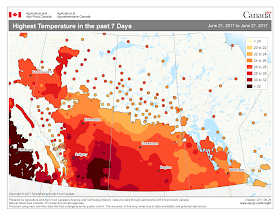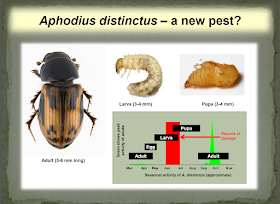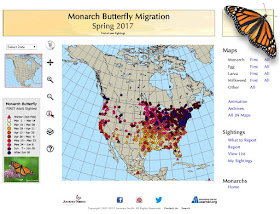Grasshopper Simulation Model Output – Predicted hatch was 71% (52% last week) with 30% of the population in the first instar, 26% second instar, 12% third instar and 2% in the fourth instar. Across the prairies, the mean developmental stage was second instar. The greatest development was predicted to be across southern regions in all three provinces.
Grasshopper populations near Saskatoon were predicted to be primarily in the second instar this week with the appearance of third and fourth instars. Model output suggests that grasshopper development is slightly ahead of average development. Based on long term meteorological data, populations should be predominantly in the first and second instars with a low number being third instars. This week’s survey (SW of Saskatoon) indicates that most melanopline grasshoppers are already in the second and third numbers.


Grasshopper Scouting Steps:
● Measure off a distance of 50 m on the level road surface and mark both starting and finishing points using markers or specific posts on the field margin.
● Starting at one end in either the field or the roadside and walk toward the other end of the 50 m making some disturbance with your feet to encourage any grasshoppers to jump.
● Grasshoppers that jump/fly through the field of view within a one meter width in front of the observer are counted.
● A meter stick can be carried as a visual tool to give perspective for a one meter width. However, after a few stops one can often visualize the necessary width and a meter stick may not be required. Also, a hand-held counter can be useful in counting while the observer counts off the required distance.
● At the end point the total number of grasshoppers is divided by 50 to give an average per meter. For 100 m, repeat this procedure.
● Compare counts to the following damage levels associated with pest species of grasshopers:
0-2 per m² - None to very light damage
2-4 per m² - Very light damage
4-8 per m² - Light damage
8-12 per m² - Action threshold in cereals and canola
12-24 per m² - Severe damage
>24 per m² - Very severe damage
* For lentils at flowering and pod stages, >2 per m² will cause yield loss.
* For flax at boll stages, >2 per m² will cause yield loss.

































